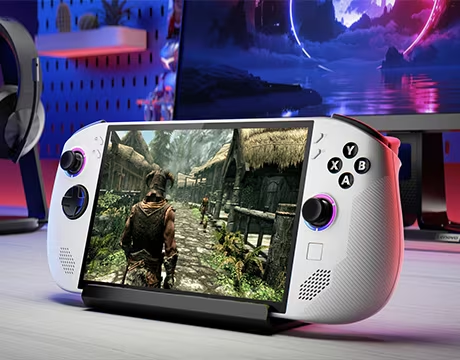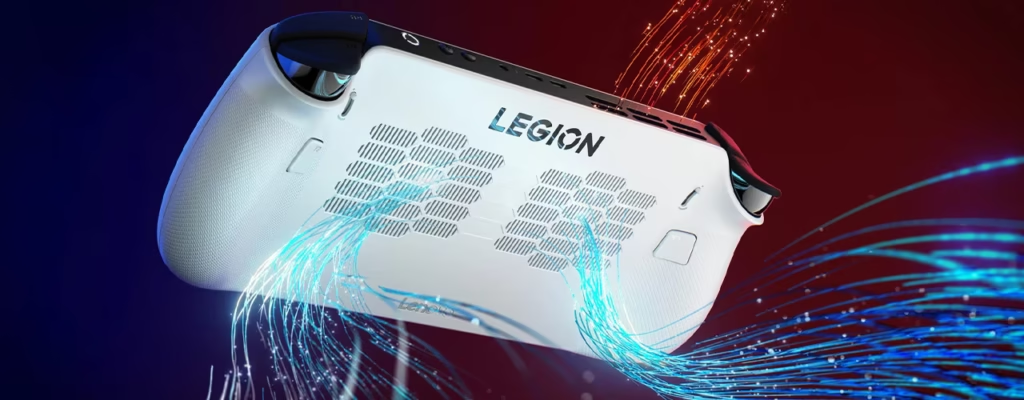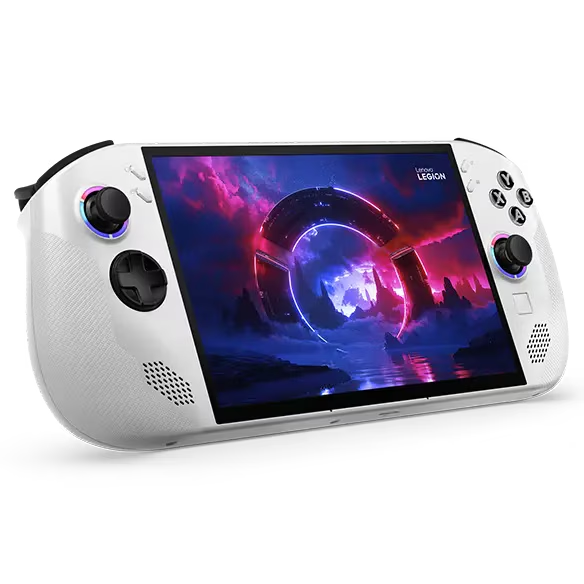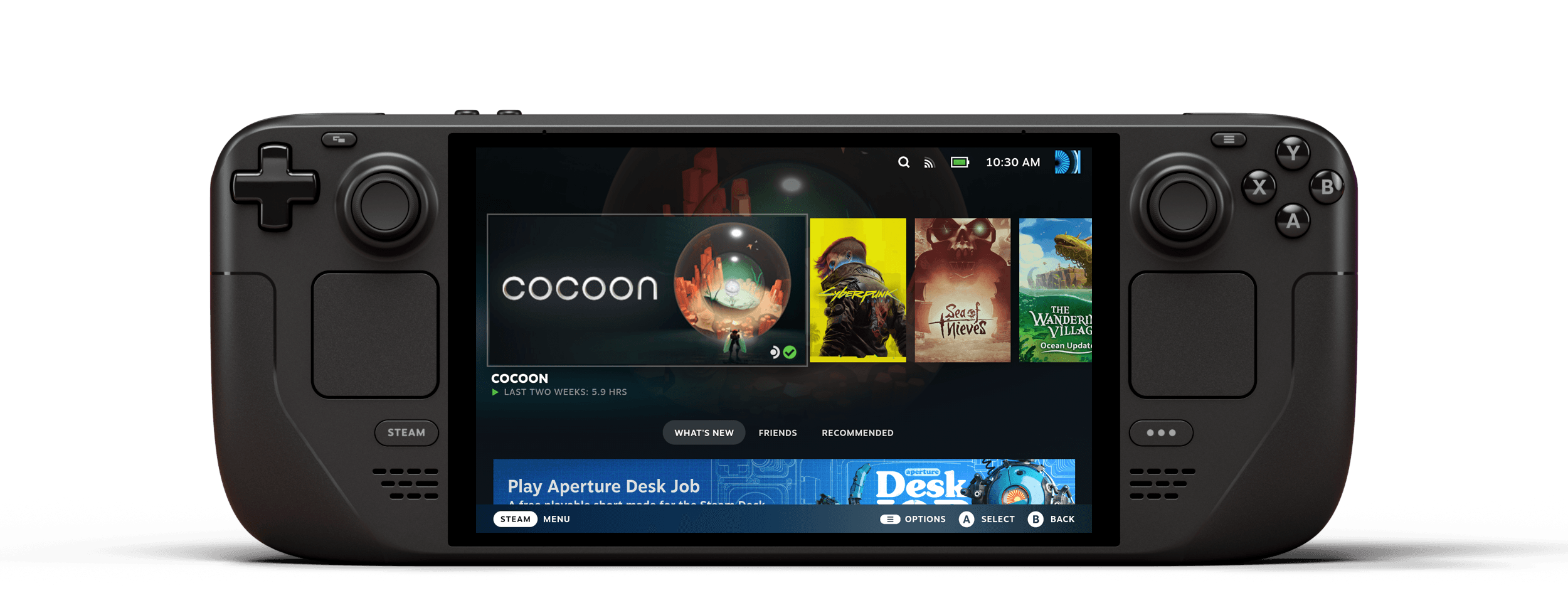Introduction: A Defining Moment for Portable PC Gaming
The Lenovo Legion Go S, expected to launch in May 2025, marks a pivotal shift in the evolution of handheld gaming. More than just a compact gaming device, the Legion Go S is poised to become the first third-party handheld console officially supporting SteamOS, making it a foundational piece in the next generation of portable gaming systems.
Designed in collaboration with AMD and backed by full compatibility with Valve’s SteamOS, the Legion Go S delivers a tailored gaming experience in a form factor that balances affordability, performance, and cross-platform flexibility. Priced at $499, it enters the market as a cost-effective alternative to more expensive handhelds, without compromising essential hardware features or long-term upgradability.

Its release coincides with a broader industry shift: an increasing number of gamers are seeking the freedom and openness of Linux-based platforms like SteamOS, paired with the familiar functionality of Windows. The Legion Go S delivers on both fronts, setting itself apart from competitors with its dual-boot system, ergonomic build, and a custom APU optimized for efficiency and gaming performance.
Lenovo Legion Go S – Design & Build: Lightweight, Durable, and Comfortable
Unlike its predecessor, the original Legion Go with detachable controllers, the Legion Go S embraces a more refined and streamlined approach. It sheds modularity for portability, aiming for a clean, console-like experience that feels cohesive and polished.
Design Highlights
| Feature | Detail |
|---|---|
| Dimensions | Compact and slim for on-the-go gaming |
| Weight | Approximately 600g |
| Display | 8.8-inch QHD+ IPS LCD (2560×1600) |
| Materials | Magnesium-aluminum alloy chassis |
| Controls | Fixed, ergonomic with hall-effect sticks |
| Finishes Available | Matte Shadow Grey, Arctic White |
The larger-than-average display sets it apart from many other compact devices. At 8.8 inches, it offers more screen real estate without feeling bulky, making it ideal for titles with intricate UI elements or expansive environments. Its high-resolution display ensures sharp visuals, while the form factor remains comfortable during extended gaming sessions.
A matte finish and contoured edges add a sense of premium design typically reserved for more expensive hardware, while its construction is sturdy enough to withstand frequent travel and use.
Hardware & Internal Specs: Small Form, Strong Core
At the heart of the Lenovo Legion Go S lies the AMD Z2 Go chip, a custom APU designed to balance efficiency and gaming-grade performance. It brings a combination of high-speed LPDDR5X memory and integrated RDNA 3 graphics, enabling users to play demanding titles without needing external GPUs or docks.
Hardware Specifications
| Component | Specification |
|---|---|
| Processor (CPU) | AMD Z2 Go (Zen 4, 6-core, 12-thread) |
| Graphics (GPU) | Integrated RDNA 3 (6 Compute Units) |
| RAM | 16GB LPDDR5X @ 7500 MHz |
| Storage | 512GB PCIe 4.0 SSD (Expandable via M.2) |
| Battery | ~45Wh (Estimated 2.5–6 hours runtime) |
| Cooling System | Dual-fan active cooling |
Preliminary testing shows that the Legion Go S outpaces several competitors in multi-threaded applications, making it a capable machine for not just gaming, but also light creative work, emulation, and productivity. Although it falls short of matching the highest-tier gaming handhelds in raw GPU output, it excels in balancing thermal management, power draw, and frame rates.
The inclusion of a user-accessible M.2 SSD slot provides rare flexibility in this price range, giving users a pathway to expand storage with minimal effort.
Operating System: Dual-Boot Freedom
One of the defining features of the Lenovo Legion Go S is its official support for both Windows 11 and SteamOS, offering gamers the best of both ecosystems. It ships with Windows pre-installed, ensuring full compatibility with the widest range of PC games and software. But by May 2025, users will have the option to install SteamOS officially, supported through Lenovo’s BIOS and driver package.
This makes the Legion Go S one of the first devices to offer a seamless dual-boot experience designed from the ground up with SteamOS in mind.
Benefits of SteamOS Support
- Streamlined, controller-native interface
- Faster boot times and better battery management
- Enhanced thermal efficiency
- Direct access to Steam library without third-party launchers
- Open-source backend for customization
Gamers who prefer a console-like experience can stick with SteamOS, while power users, modders, and developers may opt for Windows to unlock the full flexibility of PC gaming.
Gaming Experience: Tailored Performance, Flexible Controls
Gaming on the Lenovo Legion Go S feels smooth, thanks to its combination of strong CPU architecture and modern GPU features. The hall-effect joysticks provide high precision without the dreaded drift issues seen in some other devices, and the tactile controls make for an intuitive gameplay experience.
Its display is large enough to appreciate detailed visuals in games like Elden Ring or Baldur’s Gate 3, while refresh rates and color depth remain high even when running at reduced resolutions to conserve battery life.
Game Performance Queue
| Title | Recommended Settings | Avg FPS (1080p) | Notes |
|---|---|---|---|
| Baldur’s Gate 3 | Medium | 60 | Runs great in SteamOS and Windows |
| Elden Ring | Medium + FSR | 45–60 | Smooth, but benefits from 720p |
| Hades II | High | 100+ | Lightweight, very responsive |
| Cyberpunk 2077 | Low + FSR | 40–50 | Demands tweaks for stable framerate |
| Forza Horizon 5 | Medium-High | 60–70 | Beautiful visuals with dynamic scaling |
The Legion Go S also supports AMD FidelityFX Super Resolution (FSR), allowing users to play graphically intensive games at lower internal resolutions without significantly compromising visual quality.
Connectivity & Expandability
The Lenovo Legion Go S includes a sensible array of ports and expansion options that suit both home and travel use. While not overloaded with unnecessary ports, it gives users the essentials — and even allows SSD upgrades.
Connectivity Table
| Feature | Details |
|---|---|
| USB-C Port (x2) | One for charging, one for peripherals |
| 3.5mm Audio Jack | Yes |
| DisplayPort Output | Via USB-C |
| Wi-Fi | Wi-Fi 6E |
| Bluetooth | Bluetooth 5.2 |
| M.2 SSD Slot | Yes (user-accessible) |
With USB-C DisplayPort support, the Go S can easily connect to external monitors or docks. When paired with a keyboard and mouse, it transforms into a desktop replacement for light office work, emulation, and streaming.
Comparison with Competitors
The Legion Go S enters a market filled with alternatives — each with strengths and compromises. Compared to the Steam Deck OLED and the ROG Ally Z1, the Legion Go S strikes a unique balance between performance, price, and platform flexibility.
Competitive Comparison Chart
| Feature | Legion Go S | Steam Deck OLED | ROG Ally Z1 |
|---|---|---|---|
| OS | Windows + SteamOS | SteamOS only | Windows only |
| Display | 8.8″ QHD+ LCD | 7.4″ 90Hz OLED | 7″ 120Hz LCD |
| CPU | AMD Z2 Go | AMD Van Gogh | AMD Z1 |
| Price | $499 | $549 | $599 |
| Detachable Controllers | No | No | No |
| Expandable Storage | Yes (M.2) | Yes (microSD) | No (limited upgrade) |
The Legion Go S doesn’t try to compete on raw specs alone. Instead, it emphasizes user choice, software support, and build quality — all within an accessible price range.
Final Verdict: A Forward-Thinking, Feature-Rich Device
The Lenovo Legion Go S may be one of the most significant handheld gaming devices released in recent years — not because it shatters records in power or innovation, but because it arrives at the perfect intersection of practicality, price, and platform flexibility.
Its lightweight, solid build makes it ideal for gamers on the move. The dual-OS structure empowers both Windows users and SteamOS enthusiasts, without forcing a compromise. Its screen is expansive, its internals are well-optimized, and its upgrade path is user-friendly — all of which are rare to find under $500.

Of course, battery life could be stronger, and users looking for modular controls may be better served by other devices. However, in every meaningful way, the Legion Go S succeeds at what it sets out to do: deliver a powerful, accessible, and open handheld gaming experience.
It doesn’t just offer another alternative to the Steam Deck — it helps define what the next generation of handheld PCs should look like: flexible, affordable, and focused on the user.


